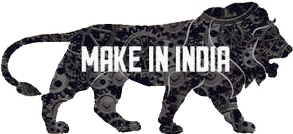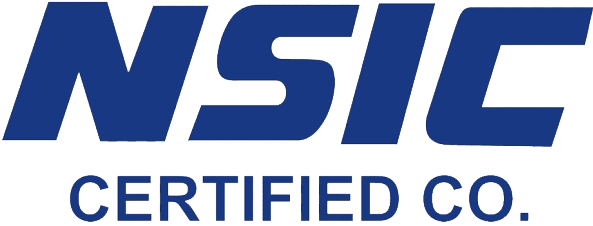So, I was thinking about how messy crypto wallets used to be. I mean, juggling a dozen apps just to manage different blockchains? That’s a headache no one asked for. Really? Yeah, seriously. The whole scene has evolved way beyond that chaos. Now, with Web3 connectivity and the rise of multi-chain wallets, things are finally clicking into place in a way that feels seamless—well, almost. But I’m getting ahead of myself.
At first glance, the idea of a dApp browser built straight into your wallet sounds like a game-changer. No more hopping back and forth between apps or wrestling with browser extensions that barely work. Instead, you get a unified experience where staking tokens, swapping assets, and diving into DeFi protocols happen all in one spot. It’s like having a Swiss Army knife but for crypto. Hmm… that convenience is hard to beat.
Okay, so check this out—multi-chain support isn’t just a flashy feature. It’s practically a necessity now. The crypto ecosystem is sprawling across Ethereum, Binance Smart Chain, Polygon, Avalanche, and a bunch of others. Each has its perks, but switching wallets or networks manually? That’s a real pain. My instinct said there had to be a better way. And guess what? The binance wallet multi blockchain offers exactly that.
Wow! Imagine managing assets across several blockchains without the usual friction. Your staking rewards on one chain, NFT collections on another, and your DeFi liquidity pools scattered somewhere else—all accessible from a single interface. It sounds almost too good, right? But it’s happening. And honestly, this kind of integration is what will push mainstream adoption forward.
Here’s the thing: wallets with embedded dApp browsers reduce the attack surface for phishing scams, too. Instead of copy-pasting contract addresses or fumbling with third-party browsers, you’re interacting directly within a controlled environment. That extra layer of security? It’s not just marketing fluff—it’s very very important. Still, I’m not 100% sure if all multi-chain wallets maintain the same level of security across every blockchain. That’s something you gotta keep an eye on.

Why Staking in a Multi-Chain Wallet Feels Different (and Better)
Now, staking. This part bugs me sometimes because the user experience can be hit or miss depending on the wallet. Initially, I thought staking was basically the same everywhere. You lock tokens, earn rewards, rinse and repeat. But then I realized the devil’s in the details—like how easily you can swap between networks or the speed at which your rewards show up.
On one hand, some platforms force you to shuttle your tokens around manually, which can lead to hefty fees and delays. On the other hand, wallets that natively support multiple blockchains let you stake assets directly without all that extra hassle. This is huge for folks who want to stay nimble and seize DeFi opportunities as they pop up.
For example, the binance wallet multi blockchain integrates staking and Web3 dApp browsing in a way that feels natural. You can jump into yield farming on BSC, then switch over to Ethereum-based protocols—all without logging out or switching devices. That fluidity is a game-changer, especially if you’re chasing the best APRs.
Honestly, I’ve tried other wallets that claim multi-chain support, but the experience was clunky. Sometimes the staking interface was buried under layers of menus, or the dApp browser was glitchy. Maybe it’s just me, but the smoother the flow, the more likely I am to stick around. Plus, having everything under one roof cuts down on mistakes—like accidentally sending tokens to the wrong chain.
Here’s a quick side note: multi-chain wallets also open up new possibilities for cross-chain DeFi strategies. You can diversify your investments across ecosystems without juggling multiple apps or hardware wallets. That’s not just convenient—it’s a strategic advantage in a market that moves fast.
Web3 Browsers: The Unsung Heroes of Crypto Usability
Okay, so let me spill a little secret about dApp browsers. Most people underestimate how critical they are until they start using one that actually works well. The first time I tried a wallet with a built-in dApp browser, it felt like discovering a hidden door to the whole Web3 world. Suddenly, interacting with decentralized exchanges, NFT marketplaces, and governance portals became straightforward.
But here’s something weird: not all dApp browsers are created equal. Some are slow, buggy, or incompatible with popular protocols. Others don’t handle wallet permissions gracefully, which leads to frustrating pop-ups or failed transactions. It took me a few tries to find one that felt reliable.
And yes, the binance wallet multi blockchain definitely gets this right, from my experience. The browser is responsive, supports multiple blockchains, and integrates staking features seamlessly. That means you don’t have to juggle extensions or risk your security by using external browsers. It’s all in the app—streamlined and, dare I say, enjoyable.
Hmm… I do wonder how this integration will evolve as more blockchains adopt different standards or as Layer 2 solutions gain traction. Will these wallets keep pace? I guess time will tell. But for now, having a solid multi-chain wallet with a dependable dApp browser feels like the closest thing to a “one-stop shop” for crypto users.
Okay, so here’s a small rant: I’ve seen some wallets touting multi-chain support but then making you jump through hoops to switch networks manually. That’s not multi-chain; that’s multi-headache. What I’m really excited about is wallets that anticipate your moves—like automatically detecting the chain a dApp operates on and switching for you, without you even noticing.
Final Thoughts: The Road Ahead for Multi-Chain and Web3 Wallets
Initially, I thought multi-chain wallets were just a nice-to-have, a convenience for power users. But the more I dive into it, the more I see they’re fundamental for scaling crypto adoption. The ability to stake, explore dApps, and manage diverse assets from a single interface isn’t just cool tech—it’s a necessity.
That said, there’s still room for improvement. Wallet security, UX polish, and support for emerging chains need constant attention. Plus, regulatory uncertainty keeps casting shadows over some innovations. But hey, that’s the wild west for you.
So, if you’re part of the Binance ecosystem or just tired of managing a scattered crypto portfolio, take a peek at the binance wallet multi blockchain. It’s not perfect, but it’s one of the better examples of how multi-chain wallets can simplify your crypto life while opening doors to new Web3 possibilities.
And honestly? I’m curious to see how these tools evolve. Will they become as intuitive as your smartphone? Will they finally make staking and DeFi accessible to everyone, not just nerds like me? Time will tell, but the journey is already pretty damn exciting.
Frequently Asked Questions
What exactly is a multi-chain wallet?
A multi-chain wallet lets you manage assets and interact with dApps across different blockchains from one interface, without switching apps or devices.
Why is Web3 connectivity important for crypto wallets?
Web3 connectivity enables direct interaction with decentralized applications (dApps) inside the wallet, making it easier and safer to use DeFi, NFTs, and other blockchain services.
How does staking work in a multi-chain environment?
Staking in a multi-chain wallet means you can lock tokens and earn rewards on different blockchains seamlessly—sometimes without having to move funds manually between chains.










